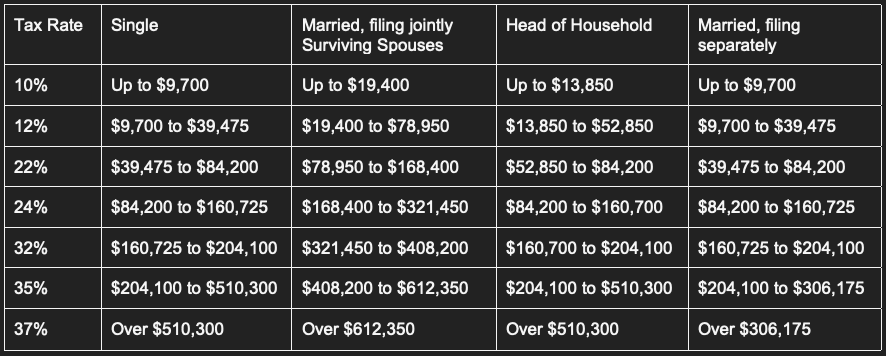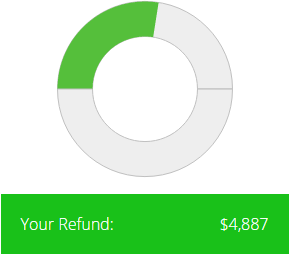Filing 2020 taxes online via Efile for maximum 2020 tax return
2021 has been a busy and sometimes overwhelming year. And many of us are glad to see it finally coming to a close. If the 2021 tax season completely passed you by, you may be wondering about your 2020 tax return online and filing a return for your 2020 taxes.
First things first, is filing my 2020 taxes still possible?

Yes, you can still file your 2020 tax return. However, the deadline for filing 2020 taxes on time was May 17, 2021. Or, if you got an extension, the deadline for filing 2020 taxes was pushed back to October 15, 2021.
Since these deadlines have passed, the IRS will consider your 2020 tax return to be late. However, they continue to accept prior year tax returns, including 2020 tax returns. The prior year tax services at PriorTax.com offer a cost-effective option to get up to date on your filing obligations. Preparing tax returns for previous years while helping you to ensure you are always filing following the right tax regulations for the right year.
Is it too late to file my 2020 tax return and receive my stimulus checks?
No, it isn’t too late to get the money available to you from the Economic Impact Payments made available to help people out during the pandemic. If you didn’t receive your stimulus checks, there is still time to claim your payments as a tax credit and receive this money as part of your tax refund.
The stimulus checks were an advance payment of a federal tax credit, the Recovery Rebate Credit. So, you’ll need to file your 2020 tax return to receive your first- and second-round stimulus checks to receive this credit. And if you received your checks but less than the full amount, by filing your 2020 taxes, you may be eligible to claim the Recovery Rebate Credit.
Can I still file my 2020 taxes online?
Since the deadline for filing 2020 taxes has now passed, your 2020 tax return is now considered a prior year return. That designation comes with a few restrictions imposed.
You’re only able to make use of the IRS’s Free File program that lets people file their 2020 taxes online until the deadline. If you use a self-preparation website to file your 2020 taxes online, you will be able to prepare your tax return paperwork online. However, once it’s ready to send off to the IRS, you will need to print, sign, and then mail off your 2020 tax return to the IRS.
If you’re looking to file your 2020 taxes entirely online, consider using PriorTax.com’s CPA Review option, available when filing your 2020 taxes with us. By opting for a CPA Review, you receive a personalized consultation with one of your certified public accounts. They will help you take maximum advantage of all of the deductions and credits for which you may be eligible, helping to reduce your tax bill or boost your tax refund. Additionally, as tax preparers registered with the IRS, they can assist with e-filing your 2020 taxes.
What happens if I am late filing my 2020 taxes?
If you are late filing your 2020 taxes and are expecting a tax refund for 2020 taxes that you overpaid, you are leaving money on the table by not filing. You have three years from the original deadline to file your return and claim your refund.
If you are late filing your 2020 taxes and you owe the IRS money, the agency imposes financial penalties for late filing and for late payment of taxes. Unfortunately, these can make your tax bill even higher. That’s because you will start to accrue interest on your unpaid tax bill from the day following the filing deadline. This interest compounds daily, which can add up.
However, even if you’re not currently in a place financially where you can pay your full unpaid tax bill, it’s often a good idea to file your 2020 tax return sooner rather than later. The late filing penalty usually works out more expensive than the late payment penalty, so it is in your interest to limit the late filing penalty from adding up.
Why can going back and filing my 2020 taxes even if I don’t owe any money be a good idea?
If the IRS owes you a refund for your 2020 tax return, by going back and filing your 2020 taxes, you can receive your refund. There’s a deadline, and you’ll need to claim your refund within three years of the original deadline to file your return. So, you have until April 15, 2024 to claim your refund on your 2020 taxes. After that date, any unclaimed excess taxes paid by U.S. taxpayers go to the U.S. Treasury.
Before filing your 2020 taxes, you can visit the 2020 Tax Calculator on PriorTax.com to calculate your refund amount. There you will find free prior year tax calculators for 2011 to 2020. These are available to help provide a personalized view of income tax returns for any of the past tex tax years. Our tax calculators are entirely anonymous and don’t require an online account or entering any identifying personal information to use.
Additionally, because of the 2020 Recovery Rebate Credit and specific to filing 2020 taxes, if you did not receive the first and/or second Economic Impact Payments or think you qualify for more than you received, it can be a good idea to file your 2020 tax return. If you’re eligible for the 2020 Recovery Rebate Credit, you’ll need to file your return to claim it, even if you wouldn’t otherwise have a filing obligation.
Still need to prepare and submit your 2020 tax return? No need to panic!
Visit PriorTax.com today to learn how we can help you get up to date and how you can prepare to file your 2020 taxes online using our safe, secure, and easy-to-use system. Our experienced tax professionals can help you prepare your 2020 tax return with confidence. They are available to answer any questions you have along the way.












